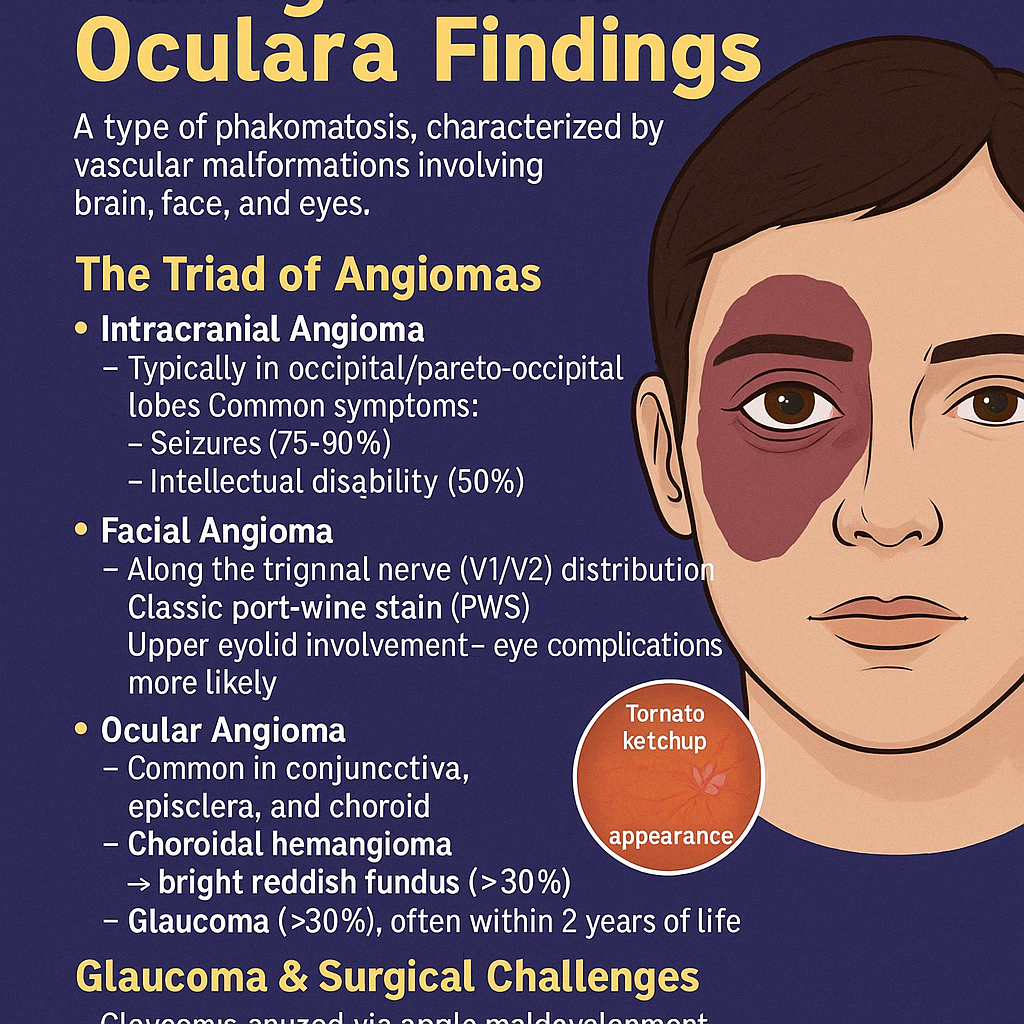Tistoryview
Disease&Treatment/Glaucoma
Sturge-Weber Syndrome (SWS), phakomatosis, Choroidal hemangioma & Glaucoma
eye_doc 2025. 4. 20. 02:34👁 What is Sturge-Weber Syndrome (SWS)?
Sturge-Weber Syndrome is a type of phakomatosis,
characterized by vascular malformations involving the brain, face, and eyes.
Also called Encephalotrigeminal angiomatosis
📊 Incidence: ~1 in 50,000 live births
🧠 The Triad of Angiomas
- Intracranial Angioma
- Typically in occipital / parieto-occipital lobes
- Common symptoms:
- Seizures (75–90%)
- Intellectual disability (50%)
- Hemiparesis, headaches
- Facial Angioma
- Along trigeminal nerve (V1/V2) distribution
- Classic port-wine stain (PWS)
- Upper eyelid involvement → eye complications more likely
- Ocular Angioma
- Common in conjunctiva, episclera, and choroid
- Choroidal hemangioma → bright reddish fundus = Tomato ketchup appearance
- Glaucoma (~30%), often within first 2 years of life


⚠ Glaucoma & Surgical Challenges
- Glaucoma caused by:
- Angle maldevelopment
- Elevated episcleral venous pressure
- Surgical risks:
- Excessive bleeding due to vascular lesions
- Complications:
- Explosive choroidal hemorrhage
- Choroidal detachment + Serous retinal detachment
✅ Summary
CategoryKey Findings
| CNS | Occipital angioma → seizures, delays |
| Facial | Port-wine stain (PWS), trigeminal area |
| Ocular | Choroidal hemangioma, glaucoma |
🎯 Ophthalmic management focuses on early glaucoma detection and choroidal complications
